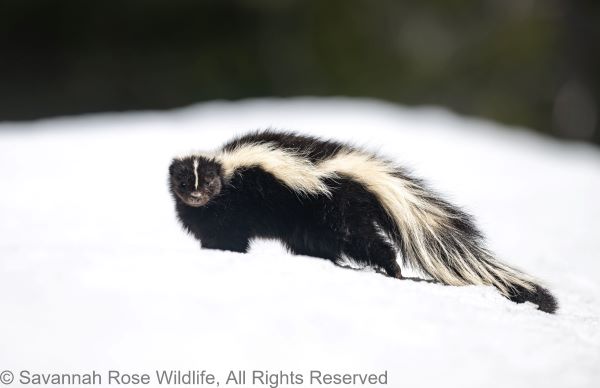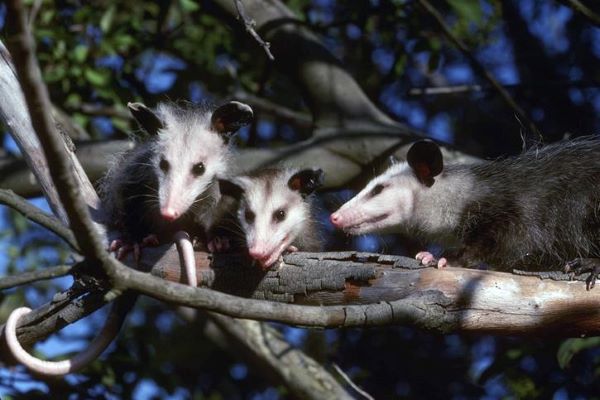California is home to many species of more commonly seen – and recognizable – wildlife, such as skunks and opossums. These "backyard wildlife" can be found in rural, residential and urban areas across the state. Each species provides valuable ecosystem services such as nutrient and seed dispersal, insect and rodent control. They play an important role in the food chain.
Skunks and Opossums

There are two skunk species in California: the spotted skunk (Spilogale gracilis) and striped skunk ( Mephitis mephitis. Spotted skunks are nocturnal and typically live in more remote or natural habitats. Striped skunks are more adaptive, can be active during the day or night, and may be found in natural, rural, and urban areas. Skunks may release a strong-smelling musk ("spray") if they feel threatened. Skunks have poor eyesight but a strong sense of smell to forage for food. Their diet may include fruit, seeds, insects, rodents, reptiles, and eggs, as well as pet food or trash.
Virginia opossums (Didelphis virginiana) are not native to California and were introduced in 1910. As the only marsupial in North America, their young remain in their mother's pouch for 2 months and ride on her back between two and four months of age. They are a shy nocturnal animal and actively avoid other animals and people. Opossums have a diverse diet that includes insects, worms, dead animals, fruits, berries, seeds, grains, and fungi.

Potential conflict with backyard wildlife may occur due to agricultural or property damage while searching for food or shelter, and human health or safety concerns due to disease (e.g., rabies, skunk roundworm, typhus).
Preventing Potential Conflict